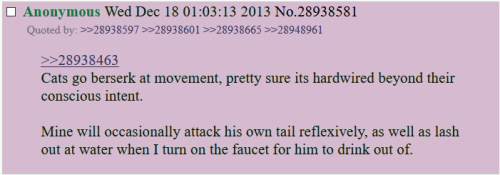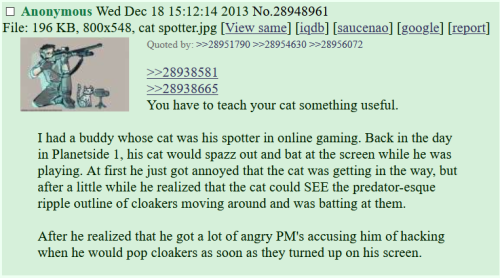Roebert - Untitled



More Posts from Roebert and Others

Beware!
dandelions deserve more respect than they get
you say “weeds” I say “widespread non-native edible plant and early-blooming pollinator resource that is not considered invasive because it behaves politely and does not cause deleterious ecological consequences”
I got the Top 4.47% on this English Vocabulary test





Evening Dress
Christian Dior Spring 1954
UNT Digital Library

Pillings Fall 2025 Ready-To-Wear
The thing that gets me the most about critics of Terry Pratchett’s novels who say they’re not important or “literature” because they’re “not realistic” is this:
By what yardstick are we supposed to be measuring “realism”?
See, I’m willing to bet that the yardstick these critics use is that oh so popular model of “the real world is really a terrible place, so the world of this piece of media is full of barbarism and grotesque cruelty.”* And Terry Pratchett never, ever fell into that dismal trope. He didn’t hunt his characters for sport. There’s no gratuitous sexual violence (no sexual violence at all, that I can think of). Even if a death or an act of evil is senseless from an in-world point of view, it isn’t random and senseless from a narrative perspective, thrown in to shock or to remind readers/viewers that “that’s reality.” The Discworld isn’t a happy rainbow place all the time. But it’s not a bleak pit of despair, either. There are bad people of all stripes, from literal torturers and megalomaniacs to regular folk who perpetuate the kind of small mundane badness pretty much every human is guilty of at one time or another. But there are good people too. And sometimes some of them die along the way, but ultimately the good people win and the world is changed for the better or at least doesn’t get any worse. Is that really “unrealistic”?
Terry Pratchett didn’t write a bunch of books about people being brutal to each other because “that’s human nature.” Terry Pratchett acknowledged–often, even–that humanity is prone to base acts. But what his books are really about, is humanity’s ability to rise above that. Terry Pratchett wrote about protagonists who are imperfect, doing good in the world often against their first instincts. He wrote about situations where it is hard to be good, but where his protagonists choose it anyway.
Rincewind is a coward who craves only boredom, but he steps up to the plate and saves the world whenever it turns out no one else can.
Sam Vimes is a bitter, cynical recovering alcoholic who is desperate to be a better man and to do what’s just for everyone.
Granny Weatherwax is an aloof, blunt loner who finds “being the good one” a burden, but she works tirelessly to protect and serve her steading, just so everyone else can be free to go about their normal little everyday lives.
Brutha starts off blindly believing that “purifying” sinners is necessary, but he learns to think for himself and when later on he has the chance to kill the worst of the Quisition’s torturers? He carries him through a desert, instead, and ends up reforming a religion.
These are just a few of so many examples. And are they “unrealistic”? Is the idea that imperfect beings can choose to do good even if it is difficult “fantasy”? Is it really too hard to believe that maybe even if the nature of humanity inclines toward selfishness and greed and all that terrible stuff, humanity can also do better than that, if individuals choose to?
Because, wow, to me that’s an awfully uninspiring view of “reality”. It’s kind of a boring one, too, when it comes to media. If all you’re going to show me is a series of escalating cruelty for shock value, because “in the real world good people suffer” or whatever edgy thing you think is “realistic”, I’m not interested, sorry.
Give me Terry Pratchett’s world, where readers can think that if a screwup like Rincewind or someone as bad-tempered as Granny can do good maybe they, the readers, can do good too. That if Vimes can turn his life around and work for justice, and if Brutha can question authority and stand up to oppression, maybe they could help change things, too. Give me that “fantasy” any day.
That’s the kind of “literature” I want.
*Either that or they just see books where magic is real and immediately put on their “I’m a grown up, grown ups don’t believe in magic” hats and roll their eyes, sure in the knowledge of their superiority, because what value could there ever be in having a little imagination, right?
I was meeting a client at a famous museum’s lounge for lunch (fancy, I know) and had an hour to kill afterwards so I joined the first random docent tour I could find. The woman who took us around was a great-grandmother from the Bronx “back when that was nothing to brag about” and she was doing a talk on alternative mediums within art.
What I thought that meant: telling us about unique sculpture materials and paint mixtures.
What that actually meant: an 84yo woman gingerly holding a beautifully beaded and embroidered dress (apparently from Ukraine and at least 200 years old) and, with tears in her eyes, showing how each individual thread was spun by hand and weaved into place on a cottage floor loom, with bright blue silk embroidery thread and hand-blown beads intricately piercing the work of other labor for days upon days, as the labor of a dozen talented people came together to make something so beautiful for a village girl’s wedding day.
What it also meant: in 1948, a young girl lived in a cramped tenement-like third floor apartment in Manhattan, with a father who had just joined them after not having been allowed to escape through Poland with his pregnant wife nine years earlier. She sits in her father’s lap and watches with wide, quiet eyes as her mother’s deft hands fly across fabric with bright blue silk thread (echoing hands from over a century years earlier). Thread that her mother had salvaged from white embroidery scraps at the tailor’s shop where she worked and spent the last few days carefully dying in the kitchen sink and drying on the roof.
The dress is in the traditional Hungarian fashion and is folded across her mother’s lap: her mother doesn’t had a pattern, but she doesn’t need one to make her daughter’s dress for the fifth grade dance. The dress would end up differing significantly from the pure white, petticoated first communion dresses worn by her daughter’s majority-Catholic classmates, but the young girl would love it all the more for its uniqueness and bright blue thread.
And now, that same young girl (and maybe also the villager from 19th century Ukraine) stands in front of us, trying not to clutch the old fabric too hard as her voice shakes with the emotion of all the love and humanity that is poured into the labor of art. The village girl and the girl in the Bronx were very different people: different centuries, different religions, different ages, and different continents. But the love in the stitches and beads on their dresses was the same. And she tells us that when we look at the labor of art, we don’t just see the work to create that piece - we see the labor of our own creations and the creations of others for us, and the value in something so seemingly frivolous.
But, maybe more importantly, she says that we only admire this piece in a museum because it happened to survive the love of the wearer and those who owned it afterwards, but there have been quite literally billions of small, quiet works of art in billions of small, quiet homes all over the world, for millennia. That your grandmother’s quilt is used as a picnic blanket just as Van Gogh’s works hung in his poor friends’ hallways. That your father’s hand-painted model plane sets are displayed in your parents’ livingroom as Grecian vases are displayed in museums. That your older sister’s engineering drawings in a steady, fine-lined hand are akin to Da Vinci’s scribbles of flying machines.
I don’t think there’s any dramatic conclusions to be drawn from these thoughts - they’ve been echoed by thousands of other people across the centuries. However, if you ever feel bad for spending all of your time sewing, knitting, drawing, building lego sets, or whatever else - especially if you feel like you have to somehow monetize or show off your work online to justify your labor - please know that there’s an 84yo museum docent in the Bronx who would cry simply at the thought of you spending so much effort to quietly create something that’s beautiful to you.
Do you have a care guide, feeding guide, or just more info about Japanese rat snakes? Is the blue a morph or them where they’re young? They’re soooo pretty
That was the standard morph! They're actually duller when young, and blue out more as they get older.

They're not common in captivity, so I can't point you towards in-depth care guides, but they're pretty dang easy as long as you give them lots of space and things to climb.
You'll want a hotspot set to 85 and an ambient temperature in the low-mid 70s. A heat mat is a great heating choice for them to maintain those lower temperatures. 50% humidity works well - make sure they always have water and a humidity hide, which they'll use from time to time.
They do great with the standard all-rodent diet. The biggest note there is that they're really great and enthusiastic eaters, so you have to be careful not to overfeed! They'd probably eat every other day if you let them. Don't let the begging for food get to you.

![IT IS [WEELVIL] WEDNESDAY MY DUDES](https://64.media.tumblr.com/3fff659f46e4419d72d1e146ef5efb91/1677aa01e1345979-43/s500x750/37fb223bb00ab6d169a58a40a832b9012c1eab3a.jpg)
![IT IS [WEELVIL] WEDNESDAY MY DUDES](https://64.media.tumblr.com/3e23e2e5e889b559da9bcf65bcf01a7e/1677aa01e1345979-bd/s500x750/16e12f07ffdfa3f26050b0ec9174a273d013bf82.jpg)
![IT IS [WEELVIL] WEDNESDAY MY DUDES](https://64.media.tumblr.com/13edcb63bf554853cd0ba1b61bf4a43b/1677aa01e1345979-94/s500x750/2d186cd350a029e218225d12fe998a79043a96b4.jpg)
![IT IS [WEELVIL] WEDNESDAY MY DUDES](https://64.media.tumblr.com/e5b9e10226c6125f4b582b8714ab2c3c/1677aa01e1345979-ff/s500x750/82359b87322cf2afcc8629012e89131ea31e8d1c.jpg)
IT IS [WEELVIL] WEDNESDAY MY DUDES
-
 queerskittles reblogged this · 1 week ago
queerskittles reblogged this · 1 week ago -
 tzderwald liked this · 1 week ago
tzderwald liked this · 1 week ago -
 crookedthumb liked this · 1 week ago
crookedthumb liked this · 1 week ago -
 probablyapinecone liked this · 1 week ago
probablyapinecone liked this · 1 week ago -
 annabeth-granger-parker liked this · 1 week ago
annabeth-granger-parker liked this · 1 week ago -
 rentehya liked this · 1 week ago
rentehya liked this · 1 week ago -
 faboo978 reblogged this · 1 week ago
faboo978 reblogged this · 1 week ago -
 hikineet-trash reblogged this · 1 week ago
hikineet-trash reblogged this · 1 week ago -
 undead-lantern reblogged this · 1 week ago
undead-lantern reblogged this · 1 week ago -
 undead-lantern liked this · 1 week ago
undead-lantern liked this · 1 week ago -
 hollyhemmy reblogged this · 1 week ago
hollyhemmy reblogged this · 1 week ago -
 hollyhemmy liked this · 1 week ago
hollyhemmy liked this · 1 week ago -
 briarlily reblogged this · 1 week ago
briarlily reblogged this · 1 week ago -
 shygaul liked this · 1 week ago
shygaul liked this · 1 week ago -
 blanket-king liked this · 1 week ago
blanket-king liked this · 1 week ago -
 that-windy-place-tho reblogged this · 1 week ago
that-windy-place-tho reblogged this · 1 week ago -
 unlikelyapricot liked this · 1 week ago
unlikelyapricot liked this · 1 week ago -
 nicksendmememes liked this · 1 week ago
nicksendmememes liked this · 1 week ago -
 arrowkickingthemoon liked this · 1 week ago
arrowkickingthemoon liked this · 1 week ago -
 pattonflowerinnit666 reblogged this · 1 week ago
pattonflowerinnit666 reblogged this · 1 week ago -
 screechingkittybarbarian liked this · 1 week ago
screechingkittybarbarian liked this · 1 week ago -
 just-some-stufff reblogged this · 1 week ago
just-some-stufff reblogged this · 1 week ago -
 carmen-in-space reblogged this · 1 week ago
carmen-in-space reblogged this · 1 week ago -
 definitelynotsorry liked this · 1 week ago
definitelynotsorry liked this · 1 week ago -
 butchedoutboyslut liked this · 1 week ago
butchedoutboyslut liked this · 1 week ago -
 sukinovaa reblogged this · 1 week ago
sukinovaa reblogged this · 1 week ago -
 spiralsuccubus liked this · 1 week ago
spiralsuccubus liked this · 1 week ago -
 imyourheavenlyfather liked this · 1 week ago
imyourheavenlyfather liked this · 1 week ago -
 bootyholeinvader liked this · 1 week ago
bootyholeinvader liked this · 1 week ago -
 jorbs-palace reblogged this · 1 week ago
jorbs-palace reblogged this · 1 week ago -
 cosmos-hime reblogged this · 1 week ago
cosmos-hime reblogged this · 1 week ago -
 sammiekline liked this · 1 week ago
sammiekline liked this · 1 week ago -
 theawkwardterrier reblogged this · 1 week ago
theawkwardterrier reblogged this · 1 week ago -
 oxymoronicromantic reblogged this · 1 week ago
oxymoronicromantic reblogged this · 1 week ago -
 spaghettiohmygodhesdead reblogged this · 1 week ago
spaghettiohmygodhesdead reblogged this · 1 week ago -
 thesmellofdustafterrain42 liked this · 1 week ago
thesmellofdustafterrain42 liked this · 1 week ago -
 boymoder-eunuch liked this · 1 week ago
boymoder-eunuch liked this · 1 week ago -
 calicotomcat liked this · 1 week ago
calicotomcat liked this · 1 week ago -
 calicotomcat reblogged this · 1 week ago
calicotomcat reblogged this · 1 week ago -
 ace---cinnamon liked this · 1 week ago
ace---cinnamon liked this · 1 week ago -
 schwimpy liked this · 1 week ago
schwimpy liked this · 1 week ago -
 a-sunfish liked this · 1 week ago
a-sunfish liked this · 1 week ago -
 all-the-eeveelutions liked this · 1 week ago
all-the-eeveelutions liked this · 1 week ago -
 downtroddendeity liked this · 1 week ago
downtroddendeity liked this · 1 week ago -
 autisticamerican reblogged this · 1 week ago
autisticamerican reblogged this · 1 week ago -
 fiddledy-dee reblogged this · 1 week ago
fiddledy-dee reblogged this · 1 week ago -
 motherofgambit liked this · 1 week ago
motherofgambit liked this · 1 week ago -
 3-kraehen-im-anzug liked this · 1 week ago
3-kraehen-im-anzug liked this · 1 week ago -
 gigi-tastic reblogged this · 1 week ago
gigi-tastic reblogged this · 1 week ago